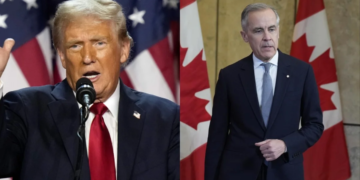The latest announcement by the United States has raised a lot of eyebrows around the world, especially in India. Reciprocal tariffs for countries having high duties on American imports have added a lot to the weight of those rules. India stands to become one of the countries where economic impacts can be quite sizable, given the country’s significance as a trading partner with the United States. Let’s discuss how US tariff policy in India and some of its critical industries.
Reciprocal tariffs are essentially injured tariffs that the U.S. levies on imports from foreign nations that have a higher tariff on American exports. For instance, high tariffs have always been there on some U.S. products, like 100% duty on American motorcycles in India. Hence, the country plans to impose the same tariffs so that trade becomes more even in both countries’ markets.
How Tariff Policy in India Will Change Things?
It is said that tariffs are something more than numbers, and this simple statement alone changes the whole face of international trade. The moment the U.S. decides to match India’s high tariff rates, it deals a direct hit on those export-driven businesses and minimizes their ability to compete and enjoy profits. Even more importantly, it might go beyond those directly affected by the ripples indulging into the economy itself.
The U.S. tariff changes are also significant considering that it is one of the biggest trading blocks with India. Strategies would now have to be developed by Indian manufacturers and exporters to maintain the profitability and sharing of the markets.
ALSO READ: Bitcoin Falls With Tariff Announcement: What’s Going On?
What is Getting Affected?

1. Automobiles and Auto Components: The challenge will be directly from the competitor U.S. as it decides to match India’s existing high tariffs on high-end luxury cars and motorcycles. This will, of course, affect the profitability and market competitiveness of both high-end luxury cars and high-end motorcycles. It could also ideally drop the volume of exports, which may affect jobs and related industries.
2. Pharmaceuticals: Indian pharmaceutical companies are now the biggest suppliers of generic drugs to the United States and will find it much harder to compete in terms of revenue or global brand presence should tariffs rise. The pharmaceutical sector remains a vital lifeblood of the Indian economy, and any kind of disruption in the trade could lead to a cascading effect on allied industries.
3. Gems and Jewellery: India sent cut and polished diamonds worth a whopping 18,882.4 million dollars to the U.S. Any increase in tariffs may lower profit margins and cut the projected growth of the sector. Indian exporters will find it difficult to sell their products since they will be looking for new avenues to sell their products after such measures and consequently, competition from countries such as China and Thailand will come in.
4. Textiles and Apparel: The textile industry is chiefly dependent on the U.S. market for export, and that may witness competition from countries having low tariff limits like Vietnam or Bangladesh.
5. Steel and Aluminium: The proposed tariffs could injure Indian exports of steel and aluminum because the United States is now looking to protect its domestic industry. Reduction in exports will lead to surplus production, price slashes, and an economic burden on manufacturers.
Economic Consequences for India
Estimates say that this reciprocal tariff imposition could mean a loss of $7 billion per year for the Indian economy. The threat of economic turmoil looms large, with important export sectors such as metals, jewelry, pharmaceuticals, and textiles at risk. The flow of Indian companies will also have increased compliance costs and disruption to their supply chain.
ALSO READ: Where to Invest After Trump’s Tariff Policy?
Tariff Policy in India: What Can India Do?
India must take proactive steps in order to address this in order to reduce the loss in the economy. The measures include:
1. Negotiating Bilateral Agreements: India can negotiate tariff reductions on a specified list of goods, thereby creating win-win situations for both nations.
2. Diversifying Export Markets: Exploring new markets beyond the U.S. could help to reduce dependency and make export revenues more stable. Expanding trade partners to include European countries and ASEAN countries can act as a buffer against potential policy shifts in the U.S.
3. Enhancing Domestic Competitiveness: Countermeasures in technology and infrastructure may be adopted by Indian manufacturers to prevent heavy costs on their products and thus make them competitive despite higher tariffs.
4. Incentivizing Innovation: The ability to create niche products that feed specific requirements across the globe will lessen the effect of negative tariff regimes.
It’s going to put a serious dent in India’s trade relations with the new U.S. tariff policy. The new trade dynamics would require Indians to enhance competitiveness, diversify markets, and build strategic tie-ups with some countries to cushion the damage. As the events unfold, it will depend on how much they can stay nimble and prepared which will determine how well India rides this storm.















Discussion about this post